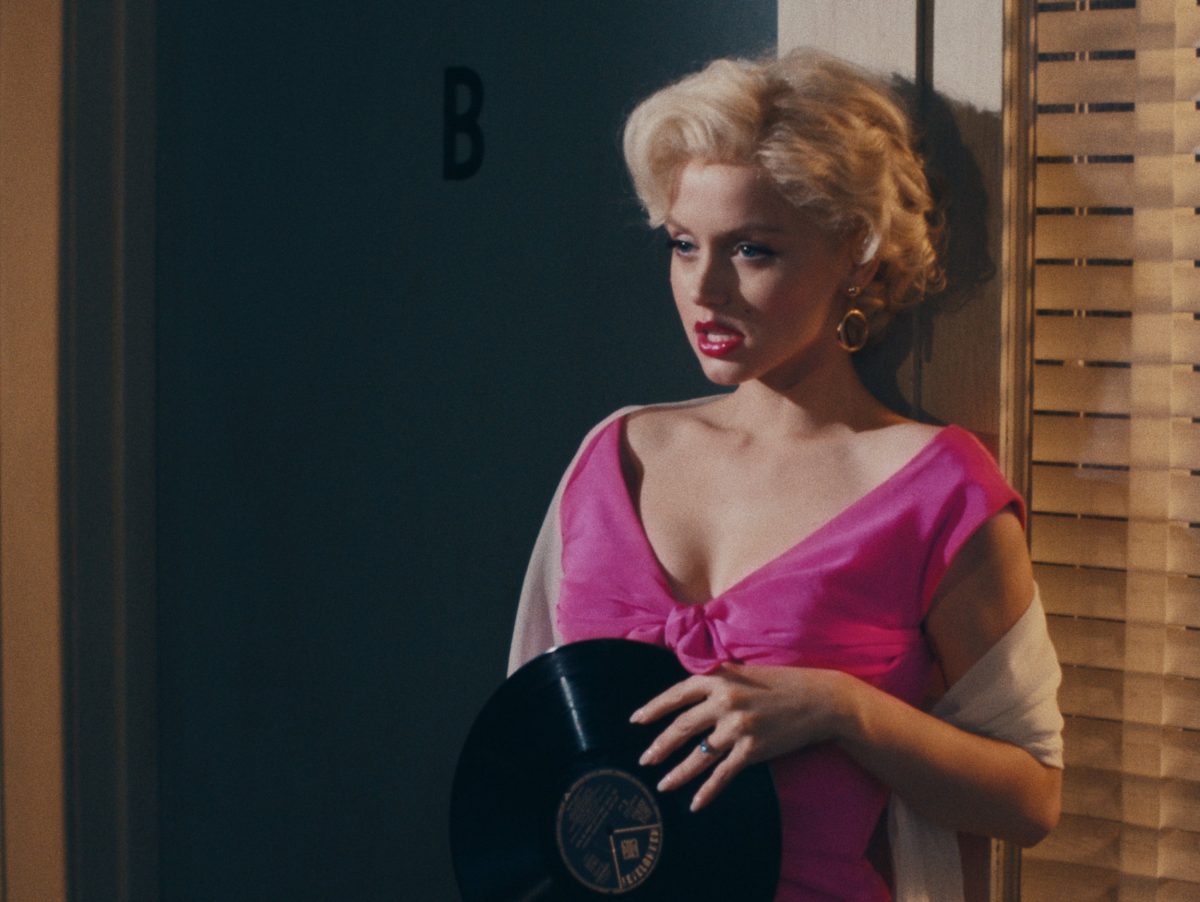Photo Courtesy of Netflix
Netflix’s psycho-thriller “Blonde” is based on the novel by Joyce Carol Oates depicting Marilyn Monroe’s life and some of the most painful tragedies she experienced.
The film by Andrew Dominik, while advertised as an adaptation of Oates’ novel, is described as “boldly imaginative,” but never as an actual work of fiction.
With the recent fad of making biopic movies, “Blonde” acts like one, but it is just as nonsensical and horrific as the recent vampire flick “The Invitation.”
In just the first six minutes of “Blonde,” audiences see Norma Jeane, before she became known as Monroe, repeatedly abused by her mother.
The abuse little Norma Jeane endures is nothing like anything I have seen depicted as abusive in films previously. Norma Jeane’s mother, Gladys, is shown slapping her, forcing her to sleep in a cabinet drawer as a child, driving herself and her daughter into an active fire in Hollywood Hills and trying to drown her. The abuse continues as Norma Jeane ages to become Monroe and is abused repeatedly by Hollywood’s elite and, later in the film, by JFK.
The fictional JFK sexual assault scene is one of the moments that pushes director Dominik’s imagined reality into its deserved NC-17 rating. This is the first ever Netflix-produced film with an NC-17 Motion Picture Association of America rating, with the warning of “some sexual content.”
One point of contention with Netflix’s presentation of the film rating and the MPAA’s description of the NC-17 rating is that the statement “some sexual content” is massively misleading.
The statement “some sexual content” minimizes the trauma the deeply graphic sexual content might evoke for viewers. “Titanic” should have a “some sexual content” rating because of that one steamy scene, not this film that has the potential to trigger its audience. At least some type of trigger warning should be displayed for a film rating of this caliber, or the typically smaller rating should be more visible when selecting this movie.
Dominik shared that the film is about “the meaning of Marilyn Monroe and why she endured.” The film undoubtedly highlights Norma Jeane and Marilyn Monroe’s endurance, but not why. She ages and grows in stature but remains the same woman who continues to be abused by countless others in her life.
Despite the content, Ana de Armas portrays Monroe beautifully, especially by psychological crime film director Dominik’s standard of the Hollywood starlet. Julianne Nicholson plays a haunted mother with schizophrenia and is very convincing in her role of a woman who wishes her daughter dead at times. One cinematographic aspect of Nicholson’s portrayal of Gladys that exemplifies her fear-factor to viewers is the use of low camera angles to make Gladys seem larger than life in the especially upsetting moments.
The combination of cinematography, excellent acting and haunting performances comes together to create a work that deeply upsets many but is nonetheless impactful because of its audacity in how it depicts mental illness, sexual assault and the “Old Hollywood” that still hasn’t changed.
Trigger warnings regarding the sexual and non-sexual assault scenes, promotion of mental health resources and an improved description by the MPAA need to be added in order for audiences to view and better understand this terrifying work of art.







